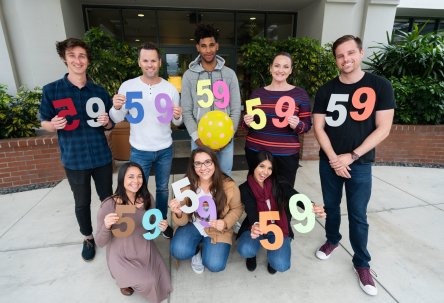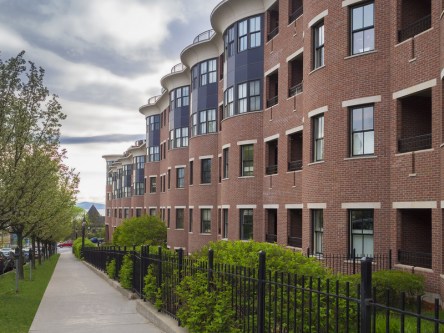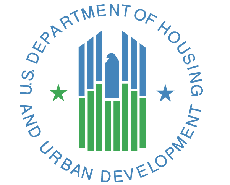The Housing Opportunity Through Modernization Act (HOTMA) of 2016 brings significant changes to HUD’s public housing program. After years of preparation and implementation processes, public housing agencies across the country are ready to change the way they complete many of their core processes. Yardi is also ready for HOTMA with updates to our PHA Suite in development, as well as a plan to provide hands-on assistance to our clients as we work through HUD’s new program mandates. Gabrielle Van Horn, director of client services for Yardi, recently led an online webinar for Yardi clients walking them through Yardi’s HOTMA strategy. The webinar’s agenda included an overview of HUD changes, notably: Finalization of the Public Housing Over-Income Rule: Section 103 (PIH 2023-3) Final Rule for Sections 102 and 104 HOTMA Implementation Revisions to all 50058 forms Housing Information Portal (HIP), which replaces IMS/PIC National Standard for the Physical Inspection of Real Estate (NSPIRE) Van Horn walked attendees through Yardi’s plan to accommodate these upcoming changes. She also provided a timeline for all Yardi PHA clients who will need to upgrade their software this year, in order to remain compliant with the new HUD rules. Important notes on preparation and training from Gabrielle’s presentation included: Prepare your Board of Commissioners: ACOPs and Admin Plans must be adjusted. These are not optional changes We recommend utilizing training from HUD, industry experts, and industry groups such as NAHRO and PHADA for regulatory guidance An in-person training will be offered at the Yardi Advanced Solutions Conference in San Diego, September 6th – 8th Additional training will be available via online learning and documentation for those unable to attend the conference “This is an all-hands-on-deck process for the PHA client support team over the next few months. We’ve got a plan to help all of our clients to get their software ready for new HUD requirements, and we are allocating resources from within to help make the process as smooth and timely as possible. We’re committed to helping our clients through this process,” said Gabrielle. As a leading provider of PHA software and services, Yardi has access to contacts at HUD to seek clarification and provide feedback on how new rules can be accommodated. Yardi, as well as other vendors, will soon have a private meeting with HUD to discuss particular challenges and to provide advice on implementation strategies. Public housing agencies who are current Yardi clients can log on to Client Central to see Gabrielle’s recorded webinar. Questions submitted during the session, along with answers from Yardi, are also available on Client...
Make the Most of MTW
What’s Next for Participating PHAs
Moving To Work (MTW) was a groundbreaking policy moment for HUD in 1996. Through MTW, HUD selected a small group (or cohort) of public housing agencies (PHAs) for the chance to create their own programs using HUD money. Gabrielle Van Horn speaks at NAHRO last month. The only caveat to these MTW programs was the they must accomplish specific goals set by HUD, including: Finding better ways to use federal funds with emphasis on reducing costs and improving effectiveness and availability of servicesHelping households improve economic self-sufficiency through incentives for participation in job training, education or job search activitiesIncreasing the availability and selection of housing resources for low-income households As a Demonstration Program, HUD share successes and challenges that each PHA participating in MTW experiences. So, MTW is not just a chance for PHAs to help their local communities, but also help other PHAs craft programs that may work elsewhere. MTW’s recent expansion is an opportunity for more agencies to participate in creating and testing innovative housing policies that can revolutionize the subsidized housing industry. That makes this a great time to check in with Gabrielle Van Horn, director of PHA support for Yardi, to get her perspective on MTW’s history and future. Gabrielle, tell us about Yardi’s first involvement with MTW. Our experience goes back more than two decades, all the way back to 2000. From the beginning, we’ve had MTW clients working with programs falling under the categories of administrative efficiencies, rent reform, work requirements and incentive programs. Collaboration with our customers in program design and our working experience with HUD programs have helped make our customers’ visions come to life. Yardi is honored to partner with some of the most progressive agencies in the country. About half of the original MTW agencies are Yardi clients, so we were well positioned to work on the expansion phase of MTW. We have clients in each cohort. We took the initiative to engage with them as soon as possible so that we could support their newly designed programs and make sure they could track data for accounting, household demographics, changes in income and other key information. How does Yardi help track control groups? To me, HUD’s requirement of control groups is one of most interesting components of the MTW Expansion guidelines. Control group data can be quite helpful in testing program design. Tracking non-participating households alongside those that are part of MTW designed programs makes it possible to prove the effectiveness of locally designed programs. That proof will go a long way in the future of public policy design. That’s why Yardi has ensured that control group tracking is a key component of our custom programming for MTW Expansion rent reform clients. Can you give us an update on how Yardi is supporting MTW Expansion 50058s? This is a new 50058 form and a new file format. We’ll be using new technology to submit these 50058s to HUD to HIP (Housing Information Portal). We have been testing and providing feedback to HUD since they first opened their original testing site to vendors. As soon as HUD is ready, we’ll have the interfaces in place to submit them electronically. One of the greatest benefits of having a longstanding relationship with HUD is the trust that we are doing our part. That means that our clients feel comfortable and confident knowing we have designed features that will reflect their vision and meet HUD’s compliance requirements. What do you think is the most exciting cohort? I am very excited about the Landlord Incentives cohort. Finding ways to make the program more appealing to landlords is critical to the future of the Housing Choice Voucher program. Are you prepared for the next MTW cohort? Yes. We have a team of programmers and support staff ready for the next programs that come from our clients. But, here’s an even better question: is the next...
HUD Holidays
Yardi Fetes Forms
Who doesn’t enjoy back-to-back holidays, even if they are unknown outside of those who work on affordable housing? The Yardi PHA and Affordable Housing teams in Santa Barbara are furthering the trend of personalized holidays this week. The subject of their celebration? HUD forms 50058 and 50059. Forms 50058 and 50059 are often abbreviated to 58 and 59, which makes May 8th and 9th the appropriate calendar days to celebrate. But what are these forms anyway? In a nutshell, 50058 and 50059 are forms used by the United States Department of Housing and Urban Development (HUD) uses to certify eligibility for housing assistance. And, since HUD is involved, they are quite complicated. So why celebrate them? “Our 5/8 and 5/9 days are a chance to recognize the great work of our PHA and Affordable Housing teams. Sure, numbers from the form are a bit strange to celebrate. Nonetheless, it is a perfect chance to take a couple of days to have some fun,” said Gabrielle Van Horn, director of PHA support for Yardi. Will 5/8 and 5/9 become reoccurring holidays? Check back next year to find out. In the meantime, take a moment to appreciate the resources created by PHAs and affordable housing providers in your community. What better way to celebrate?...
Pluses of Plugins
Affordable Housing Insight
Just what is a plugin anyway? How is it different from a patch? Or a full version update? The somewhat frustrating truth for most of us is that software is one of the few products we use that doesn’t seem ever be ‘done’. With all of the different types of software we depend on every day, it’s common for users to experience confusion, frustration and fatigue when it comes to software updates. Operating systems for smartphones, tablets and computers are constantly updating themselves with security fixes and new features. Every day it seems we get notices on our phones that app updates are ready to be downloaded and installed. Software that supports a team of professionals, such as Yardi property management software, is a good example of why updates are extremely valuable for users. Software updates address security risks, solve coding bugs and prevent unplanned downtime. Think of it this way: if your organization has developed an internal workaround to address a problem, and you haven’t updated your plugins lately, then it’s likely that problem (and perhaps others) has an official fix from Yardi ready to download and install. Laurie Swertfager from AJB Consulting talked about software updates at the Yardi Affordable Housing and PHA Forum in Atlanta. Laurie is an affordable housing consultant with extensive expertise in compliance, finance and technology. “My clients sometimes lament that little things they are looking for aren’t available in Voyager. In those cases, my first step is to see if they are up to date on their plugins. Chances are they have not, and often the uninstalled plugins have exactly what they are looking for.” says Swertfager. “Some clients work under the guise of ‘if it isn’t broke, then don’t fix it,” says Dave Kessler, vice president...
The New HUD
Impacts for Homeowners
Two updates issued by the U.S. Department of Housing and Urban Development bring bad news to homeowners. Denied Mortgage Insurance Rate Cut Costs Homeowners $500/year The new administration indefinitely suspended a proposed rate cut for FHA-backed mortgage insurance. Instead of dropping rates to .60 percent, they will remain at .85 percent. The decision—made within the hour that the new administration assumed office– will cost homeowners a savings averaging $500 a year. Savings would vary by state. In California, the savings would have averaged $860 per year. LA Times reports that the administration denied the proposed cut, citing risk prevention as the cause. Borrowers can have down payments of as little as 3.5 percent and credit scores as low as 580. The average credit score for borrowers, however, was a fair 679 in late 2016. Non-bank lenders often manage higher risk FHA-backed loans. These lenders may not have the same reserve requirements as banks. The California Association of Realtors president Geoff McIntosh issued the following statement on the decision: “FHA’s single-family home portfolio is financially sound as it has ever been, and we hope that once the new administration has thoroughly reviewed the merits of the premium reduction the suspension will immediately be lifted.” Secretary of Housing and Urban Development Ben Carson says he intends to reexamine the decision. He plans to collaborate with FHA administrator and other financial experts to “really examine that policy.” American Indian Households Face Increasing Challenges Affordable Housing Finance shared the latest developments in an independent American Indian Housing Report initiated by HUD. While tribes have responsibly used existing resources for improvements, dire housing conditions and a lack of resources continue to hinder progress. Researchers with the Urban Institute in Washington, D.C. examined the housing needs of American Indians, Alaska...
East End Revitalized
Richmond Redevelopment & Housing
Yardi client Richmond Redevelopment and Housing Association (RRHA) recently broke ground on the expansive Churchill North/East End Revitalization project. East End Revitalization will include the demolition of the 504-unit Creighton Court public housing community. It will be replaced with a mixed-income community of nearly 1,000 energy efficient homes and apartments. Residents can choose between more than 40 townhomes, 240 market rate rentals, and public housing. The new neighborhood will include more than 500 public housing units to replace those demolished at Creighton Court. All units will be converted to the U.S. Department of Housing and Urban Development (HUD) Rental Assistance Demonstration program. The vacant Armstrong High School, the site of the project groundbreaking, is also being demolished. Upon completion, the 21-acre site will receive infrastructure redevelopment in preparation for housing. Construction may take a decade or longer to complete but the momentum and enthusiasm are growing. Mayor Jones says, “From this building will rise a phoenix of new possibility and transformation of persons who will be able to have better lives and better environments to live in.” Tammy Grubb, Housing Choice Voucher Program Supervisor with RRHA shares the Mayor’s enthusiasm. “We’re revitalizing the entire corridor,” she says. “We’re looking forward to a beautiful transformation. We’re so excited about the new housing. For Grubb, the housing is more than a shelter. She sees the new homes as stepping-stones towards a brighter future. “It’s like our mission at Richmond Redevelopment, to assist in finding housing, to encourage our clients who use housing as a stepping stone to build themselves up and take advantage of the programs that they need to step up and become more self-sufficient.” “We are also excited for the new opportunities that residents will have, personally and professionally,” says Grubb. The highly anticipated...
HUD Funding
Relief in Sight
In positive news for the public housing realm, the U.S. Department of Housing and Urban Development has received $49.3 billion in gross discretionary funding. It’s a $4 billion increase over FY 2014. The resources will be allocated to rental assistance vouchers, assistance for homeless and at-risk families, community improvement, and additional training for the Public Housing Authority staff. A notable portion of the funds will be used to compensate for 67,000 Housing Choice Vouchers lost during the sequestration in 2013 and a $25.6 billion deficit between FY 2014 and FY 2015. There are few new initiatives. $35 million will be divided between new affordable housing for seniors and 700 new households with supportive services for persons with disabilities. The bulk of funding is focused on the continuation and enhancement of existing programs for vulnerable populations. $332 million will support the Housing Opportunities for Persons with AIDS program. First nation tribes will receive $748 million towards housing and community development. $2.5 billion will be channeled to the Homeless Assistance Grants, which reduce homelessness among families and veterans. Additional housing assistance comes in the form of adjustments for FHA mortgage insurance premiums. The new parameters will permit access to credit for 250,000 new homebuyers. $4.7 million low-income families will receive rental housing assistance. A grant of $50 million will transform 25,000 public housing units into project-based rental assistance contracts that can further spark capital investment. Communities will receive an additional boost of community improvement through Choice Neighborhoods. The organization receives $250 million to reconstruct impoverished neighborhoods as mixed-income communities with employment and enrichment opportunities for residents. Overall, the budget is a $4 billion increase over the budget for last year, but is it enough? HUD Secretary Julián Castro believes that it is a great start. “By...
Ending Homelessness
HUD-VASH
The U.S. Department of Housing and Urban Development (HUD) and the U.S. Department of Veterans Affairs (VA) recently announced more than $62 million in aid for homeless veterans. The funds will assist over 9,000 servicemen and women with permanent housing, dedicated case workers, and medical services. Following a year of budget cuts for HUD, the announcement comes as welcomed news. The awards follow data gathered from thousands of cities throughout the US that depict a lingering need for services; though the population of homeless veterans has declined by 33 percent, the report suggests that there are still at least 49,933 homeless veterans remaining in the US today. HUD.gov reports that the HUD-VASH collaboration will allot “$57 million to support 8,276 Tenant-Based Vouchers for rental units in the private market, and $5 million for 730 Project-Based Vouchers (PBV) for existing units or new construction in specific developments.” The program has experienced significant success in the past. Since 2008, more than 74,000 homeless veterans have secured permanent housing through HUD-VASH. Each veteran received a personal assessment by VA Medical Centers (VAMCs) before obtaining a voucher for rental assistance. Veterans who opt into the HUD-VASH program contribute less than 30 percent of their income towards housing. They are also provided with comprehensive case management and access to clinical and career services. “It is unacceptable that after their service and sacrifice, too many of our veterans find themselves living on our streets and in our shelters,” says Secretary Castro. “We’ve made significant progress reducing homelessness among veterans by a third in just four years, and these vouchers will continue to help communities build on these gains, providing targeted assistance to those in need to ensure that every veteran has a home.” President Obama has requested an additional $75...
HUD Cuts
Improvement funds fall short
The U.S. Department of Housing and Urban Development (HUD) granted $1.8 billion to public housing authorities throughout the nation. The funds will allow properties to make major renovations to existing properties that improve habitability andsustainability. The grant falls woefully short of the estimated $25.6 billion needed to bring the nation’s 1.1 million public housing units up to par. The inadequate award signals the continuation of the affordable housing crisis. Each state and many US territories received Capital Fund Programs grants to construct, repair, and renovate public housing communities. Projects range from necessary structural repairs to upgrades that improve sustainability and the cost-effectiveness of the properties. The Capital Needs in the Public Housing Program suggests that the nation’s 3,100 public housing authorities will require nearly 12 times the awarded amount to make units “decent and economically sustainable.” The recent award follows a string of budget cuts to HUD, USDA Rural Development, and other affordability-centered programs. The President’s proposed FY 2015 budget outlines further cuts. HUD is estimated to lose $32.6 billion. The lack of funding adds to a continuing concern over the affordable housing crisis. Across the board, the nation’s lowest-income members encounter mounting barriers to housing. National Low-Income Housing Coalition’s (NLIHC) “Out of Reach” report concludes that there are only 31 affordable housing units for every 100 families in need; Urban Institute states that for every 100 extremely low-income (ELI) renter households, there are only 29 affordable and available rental units. Not a single county in the nation has reached equilibrium between ELI households and available affordable housing. While a lack of available units is part of the problem, it isn’t the sole concern. Even with units available, some families cannot obtain the assistance needed to move in. According to the Center for American Progress,...
HUD Updates
Homeless, Seniors affected
The U.S. Department of Housing and Urban Development recently received a $1.7 billion dollar Continuum of Care grant. Funds will provide assessment programs, street outreach, housing, job training, mental and physical health care, substance abuse counseling, and child care for formerly homeless persons. This year’s allotment reflects a 5% cut in funding, continuing a trend of decreased support for housing assistance from the Senate. A decline in homelessness has, in part, prompted the cuts. In 2010, the Obama Administration’s Opening Doors program presented the nation with a strategic plan to end homelessness. 19 federal agencies collaborated to target populations most affected by homelessness such as veterans and children. Since the inception of Opening Doors, chronic homelessness has declined by 16 percent, homeless veterans are down by 24 percent, and homeless families have decreased by 8 percent. While the amount of persons affected by homelessness is on the decline, funding for Opening Doors and similar initiatives is decreasing. Sequestration is largely responsible for the cuts. According to the Center of Budget and Policy Priorities (CBPP) public housing has lost a total of 3.4 billion in funding since 2010 without inflation. To date, public housing developments face a $26 billion backlog of needed repairs. 1.1 million low-income families are affected by this deficit. The 5 percent cut will not permit HUD to renew all of the housing vouchers currently needed to maintain operations. The amount of new vouchers issued will also be affected. The 2013 shortfall is the most profound in HUD history. The cuts may undermine Opening Doors’ past success. The decline in funding may impede or reverse the decline of homelessness in America. Unless the sequestration is reversed, CBPP reports that more than 120,000 low-income families will be cut from rental assistance in 2014....
2013 Income Limits
Deadline to update is Jan. 25
For our Yardi affordable housing clients, the following information pertains to the 2013 income limit structure. The deadline to update income limits is Friday, Jan. 25. The 2013 income limits as published by HUD were first released on December 4, 2012. Due to miscalculations, HUD released the 2013 Income Limits a second time on December 11, 2012. These new income limits will replace those posted on December 4, 2012. All properties have 45 days from December 11, 2012 to implement the new 2013 income limits. If December 4, 2012 income limits have already been implemented or for additional information regarding income limit implementation, please see the following HUDBlast from industry expert, Mary Ross. What is HUD? HUD (Housing and Urban Development) is a government agency with a mission to “create strong, sustainable, inclusive communities and qualify affordable homes for all.” As the Mission Statement suggests, the focus of the HUD program is to provide affordable housing to those in need. In order to do so, a prospective resident must meet certain restrictions. One of the restrictions is that a household must have a total annual income below a certain amount as specified by HUD. This “limit” is referred to as the income limit. What is an Income Limit? For Affordable Housing, the income limit is the maximum amount a household’s total annual income can be in order to qualify for residency. The Income Limits are generally posted annually and are published by area. The calculation for the income limit is based off of the Area Median Income (AMI) of the specified area and is broken out on a per person basis. For example, if a 4-person household would like to live in an Affordable Housing property. In order to verify if the household qualifies,...











